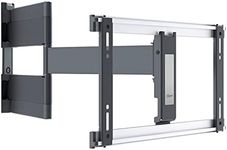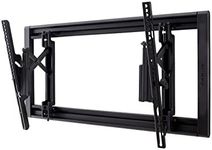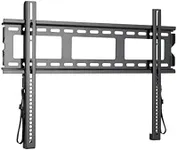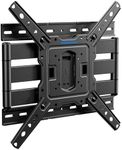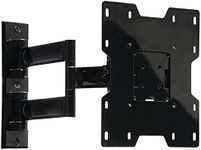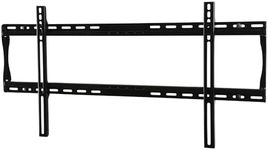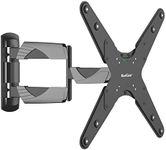Buying Guide for the Best Ultra Slim Wall Mount
Choosing an ultra-slim wall mount is all about finding the right balance between aesthetics, safety, and functionality for your TV or monitor. The goal is to have your screen sit as close to the wall as possible, creating a sleek, modern look while ensuring it is securely mounted. To make the best choice, you need to consider the size and weight of your display, the type of wall you have, and any extra features you might need, such as tilting or cable management. Understanding the key specifications will help you pick a mount that fits your needs and keeps your setup both stylish and safe.VESA CompatibilityVESA compatibility refers to the standardized distance between the mounting holes on the back of your TV or monitor. This is important because your wall mount must match these measurements to fit your screen properly. VESA patterns are usually given in millimeters, such as 200x200, 400x400, or 600x400. Smaller screens typically use smaller VESA patterns, while larger screens require bigger ones. To pick the right mount, check your display’s manual or the back of the device for the VESA size, and make sure the mount supports it.
Weight CapacityWeight capacity is the maximum weight the wall mount can safely hold. This is crucial for safety, as exceeding this limit can cause the mount to fail and damage your TV or wall. Mounts are rated for different weight ranges, such as up to 30kg, 50kg, or even more. To choose the right one, find out the weight of your TV or monitor (usually listed in the manual or online) and select a mount that can handle at least that much, ideally with a little extra margin for safety.
Profile DepthProfile depth is the distance between the wall and the back of your TV when it’s mounted. Ultra-slim mounts are designed to keep this distance as small as possible, often less than 2 inches (5 cm), for a flush, modern look. Some mounts are even slimmer, but may limit access to ports or cables. If you want your TV to look like it’s almost part of the wall, go for the lowest profile that still allows you to connect your cables comfortably.
Wall Type CompatibilityWall type compatibility refers to whether the mount can be safely installed on your specific wall material, such as drywall, concrete, or brick. Some mounts come with hardware for multiple wall types, while others are designed for just one. It’s important to know what kind of wall you have and ensure the mount is suitable for it. If you’re unsure, check the mount’s instructions or consult a professional, as using the wrong hardware can be unsafe.
Tilt and Swivel FeaturesTilt and swivel features allow you to adjust the angle of your TV after it’s mounted. Ultra-slim mounts are often fixed, meaning the TV stays flat against the wall, but some offer limited tilt to reduce glare or improve viewing angles. Swivel is less common in ultra-slim designs, as it usually requires a larger profile. If you need to adjust your TV’s angle, look for a mount with tilt, but remember that the slimmest mounts may not offer this feature.
Cable ManagementCable management refers to features that help you organize and hide your TV’s cables for a cleaner look. Some ultra-slim mounts include channels or clips to route cables behind the TV, while others rely on external solutions. If you want a tidy appearance without visible wires, consider how you’ll manage cables before choosing a mount, especially since ultra-slim designs leave little space behind the TV.


